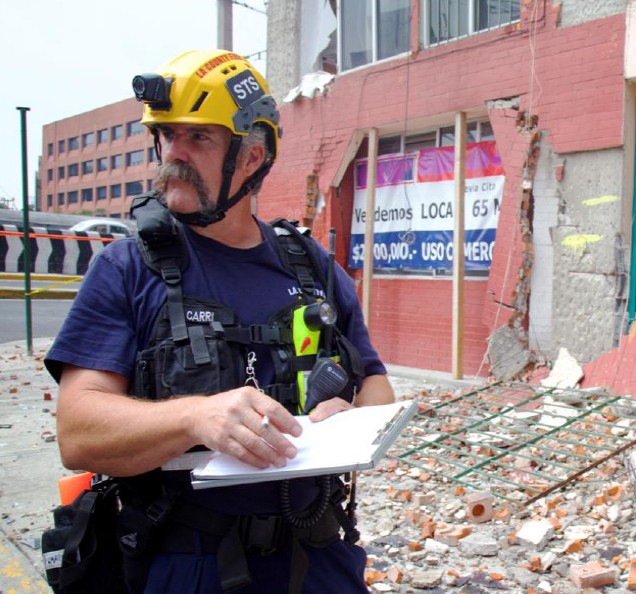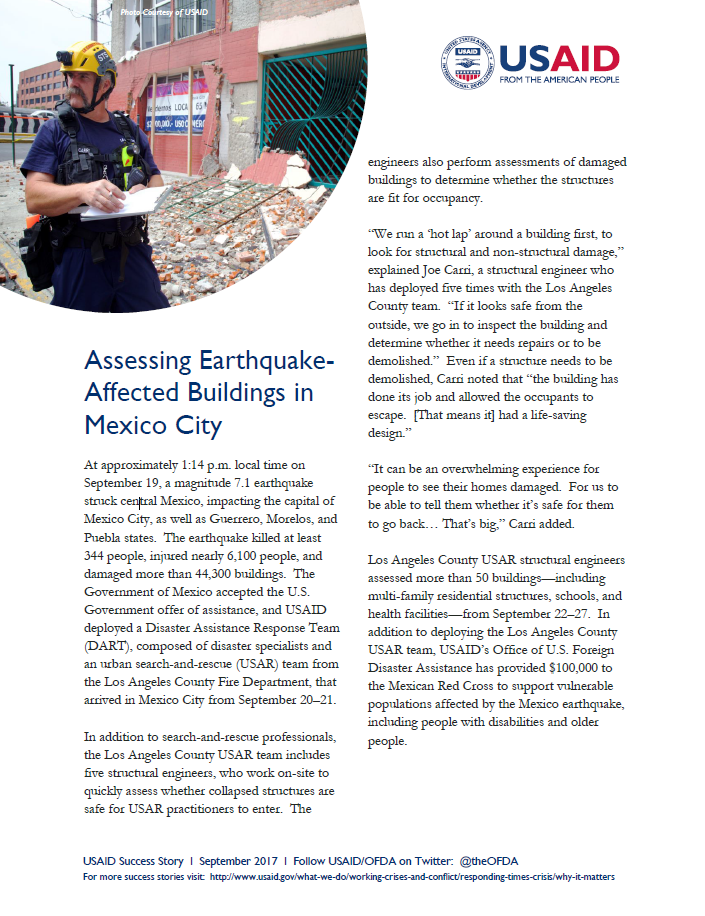- What We Do
- Agriculture and Food Security
- Democracy, Human Rights and Governance
- Economic Growth and Trade
- Education
- Ending Extreme Poverty
- Environment and Global Climate Change
- Gender Equality and Women's Empowerment
- Global Health
- Water and Sanitation
- Working in Crises and Conflict
- Disaster Assistance
- Political Transition Initiatives
- Conflict Mitigation and Prevention
- Countering Violent Extremism
- Disaster Risk Reduction
- Peacebuilding and Reconciliation
- Providing Safe & Secure Environments for Development
- Recovering From Crisis
- Resilience
- Tech Challenge for Atrocity Prevention
- World Humanitarian Day
- U.S. Global Development Lab

At approximately 1:14 p.m. local time on September 19, a magnitude 7.1 earthquake struck central Mexico, impacting the capital of Mexico City, as well as Guerrero, Morelos, and Puebla states. The earthquake killed at least 344 people, injured nearly 6,100 people, and damaged more than 44,300 buildings. The Government of Mexico accepted the U.S. Government offer of assistance, and USAID deployed a Disaster Assistance Response Team (DART), composed of disaster specialists and an urban search-and-rescue (USAR) team from the Los Angeles County Fire Department, that arrived in Mexico City from September 20–21.
In addition to search-and-rescue professionals, the Los Angeles County USAR team includes five structural engineers, who work on-site to quickly assess whether collapsed structures are safe for USAR practitioners to enter. The engineers also perform assessments of damaged buildings to determine whether the structures are fit for occupancy.
“We run a ‘hot lap’ around a building first, to look for structural and non-structural damage,” explained Joe Carri, a structural engineer who has deployed five times with the Los Angeles County team. “If it looks safe from the outside, we go in to inspect the building and determine whether it needs repairs or to be demolished.” Even if a structure needs to be demolished, Carri noted that “the building has done its job and allowed the occupants to escape. [That means it] had a life-saving design.”
“It can be an overwhelming experience for people to see their homes damaged. For us to be able to tell them whether it’s safe for them to go back… That’s big,” Carri added.
Los Angeles County USAR structural engineers assessed more than 50 buildings—including multi-family residential structures, schools, and health facilities—from September 22–27. In addition to deploying the Los Angeles County USAR team, USAID’s Office of U.S. Foreign Disaster Assistance has provided $100,000 to the Mexican Red Cross to support vulnerable populations affected by the Mexico earthquake, including people with disabilities and older people.








Comment
Make a general inquiry or suggest an improvement.